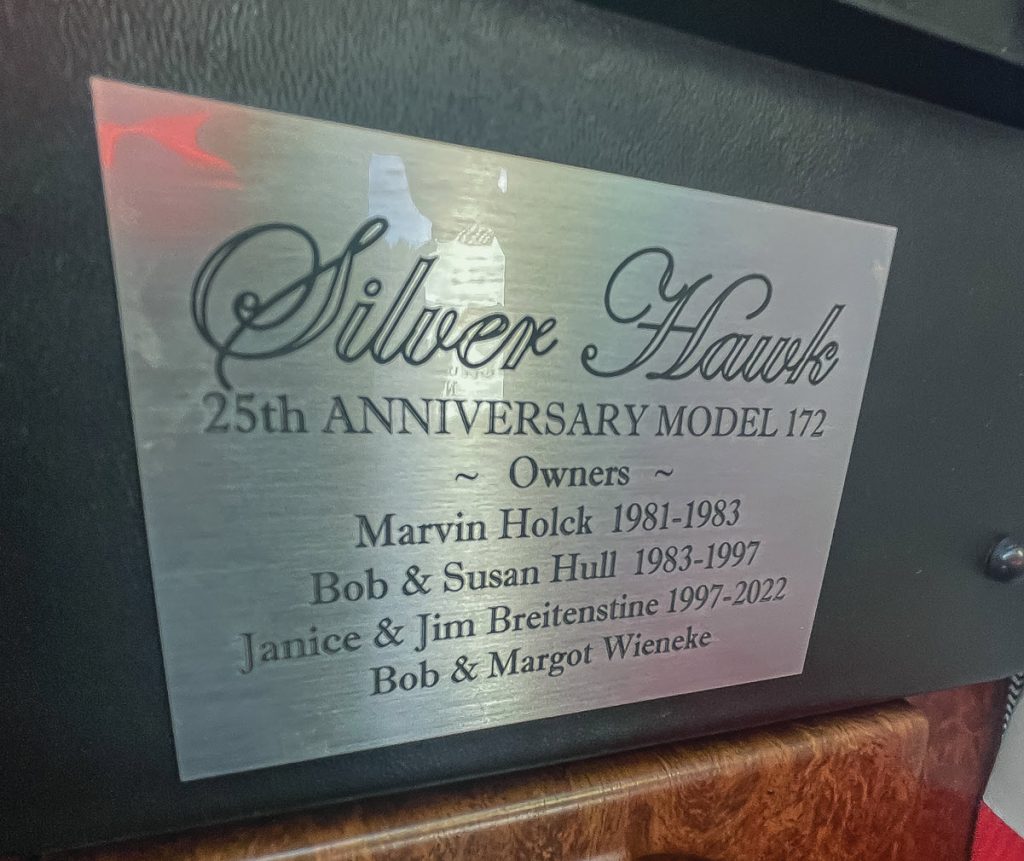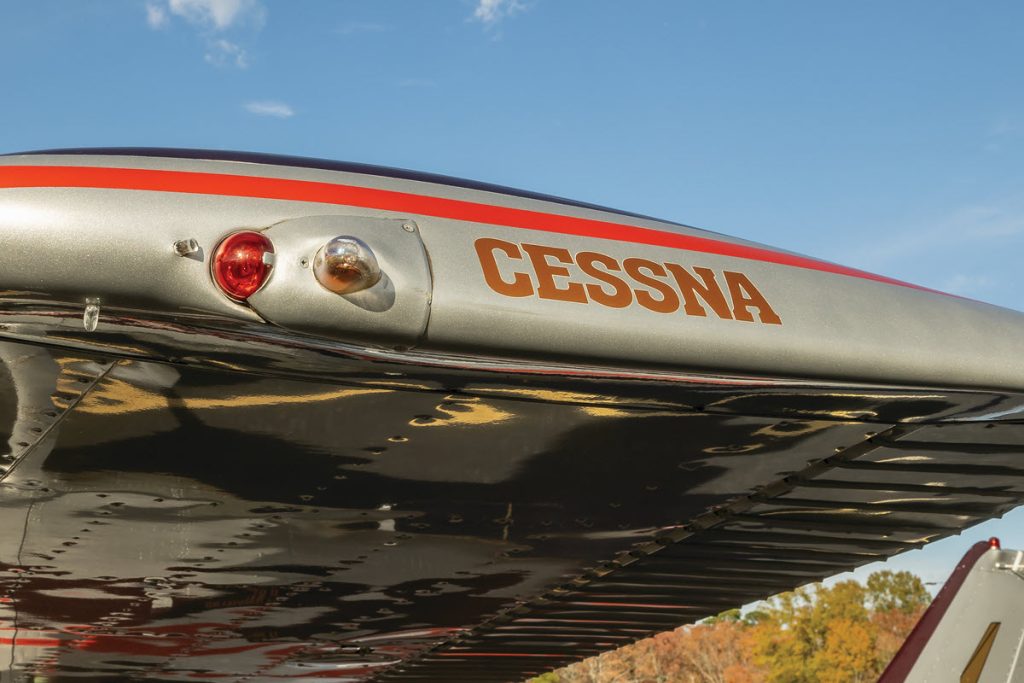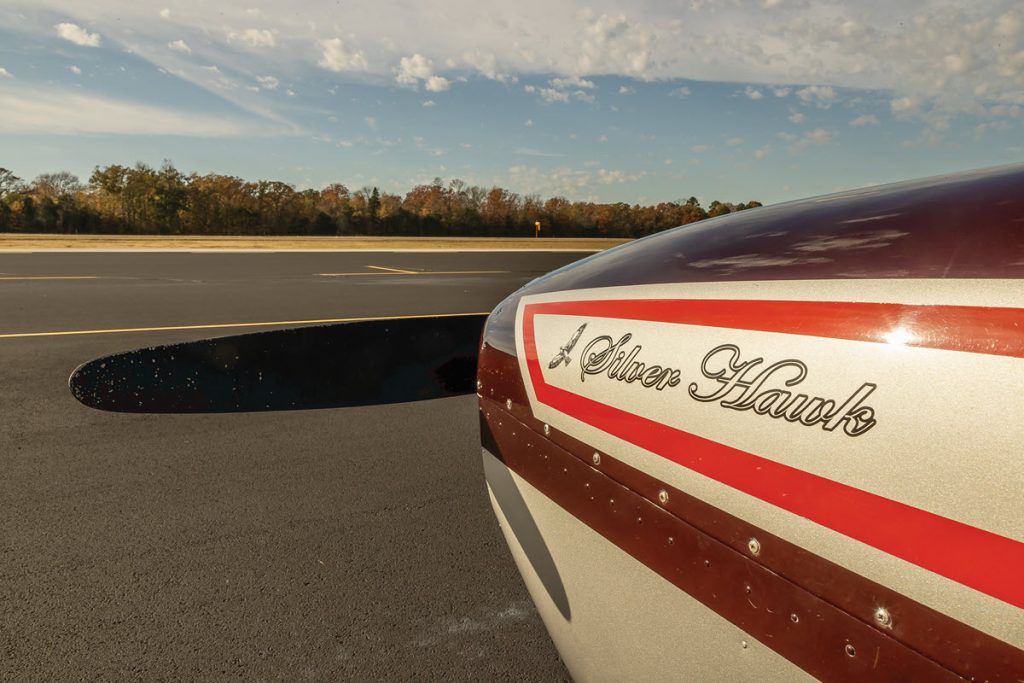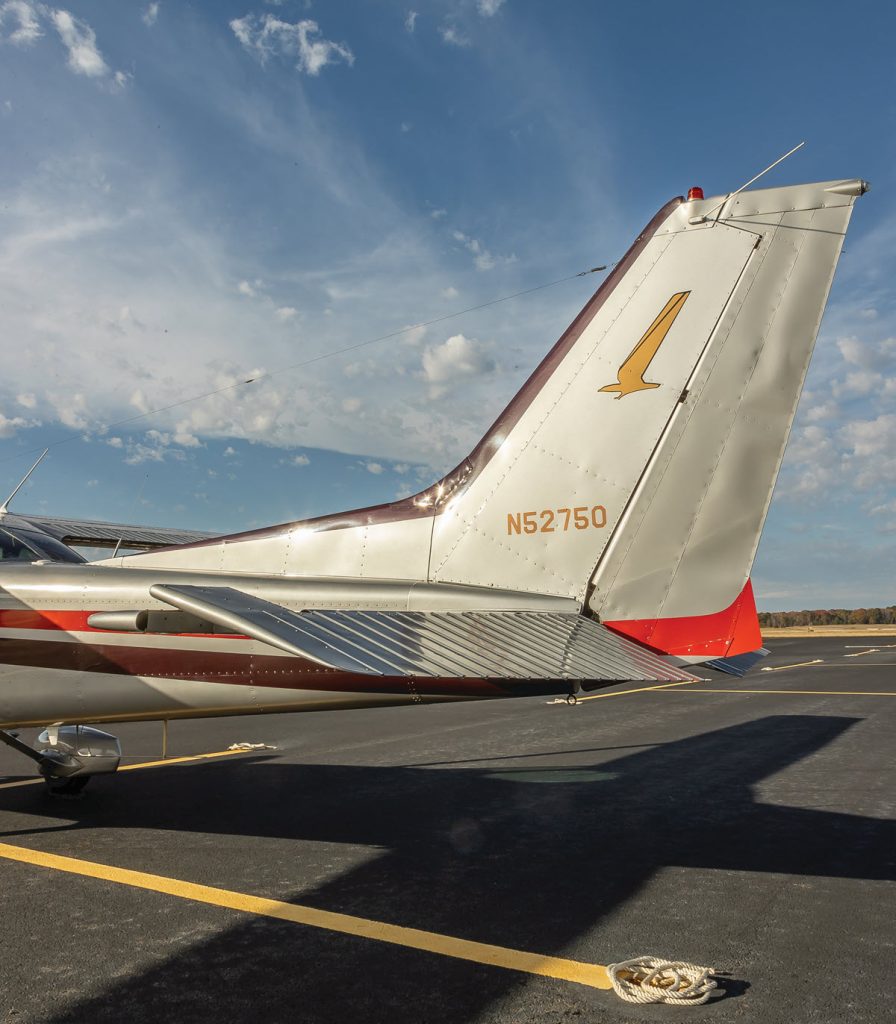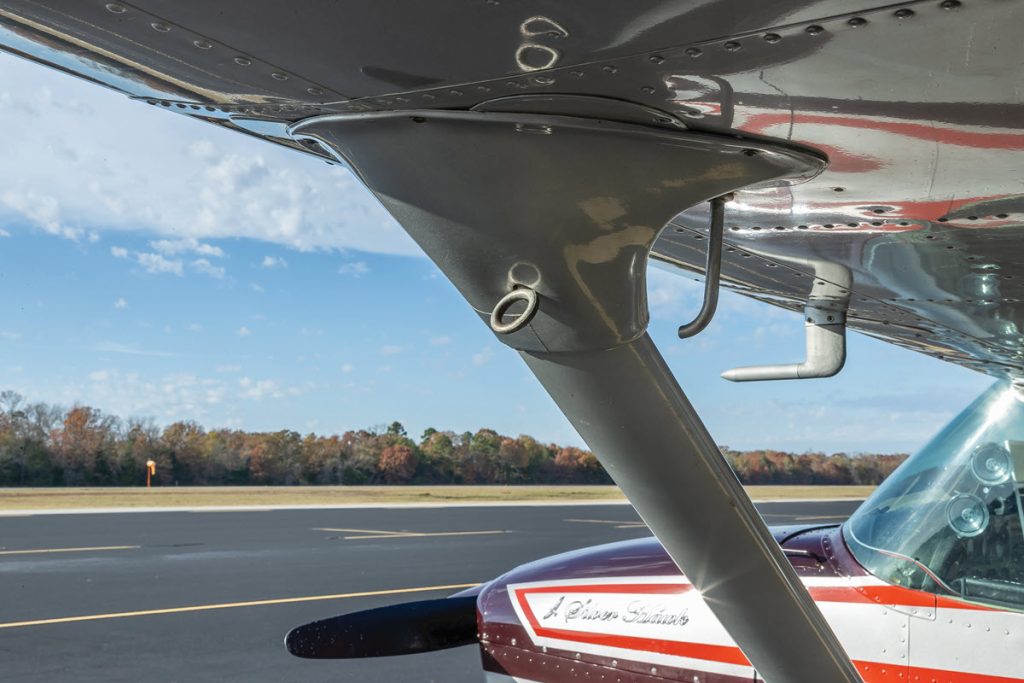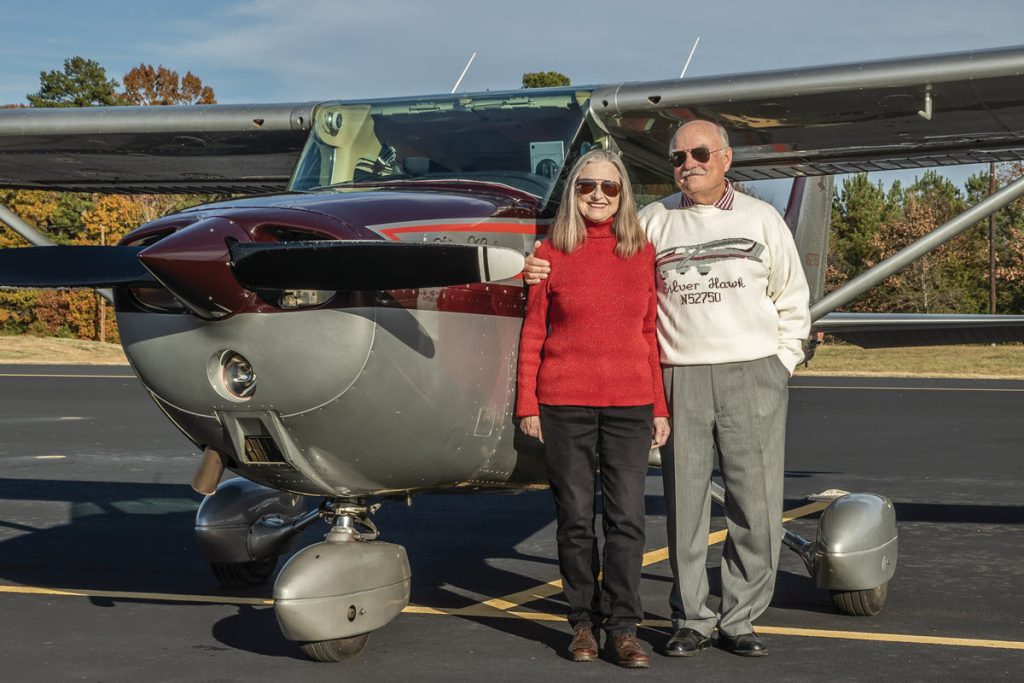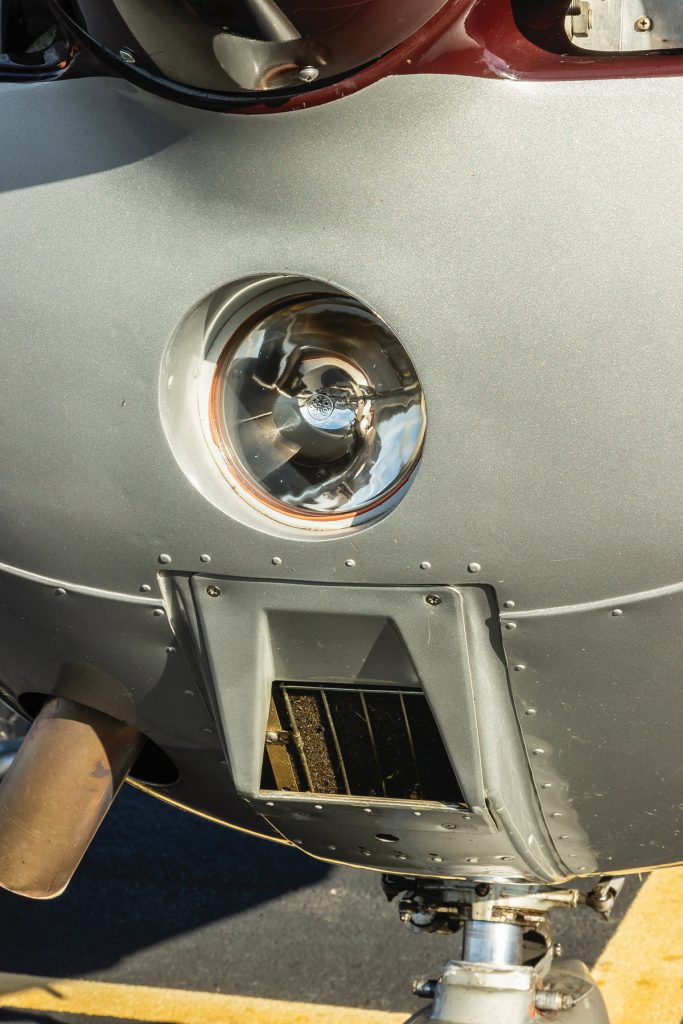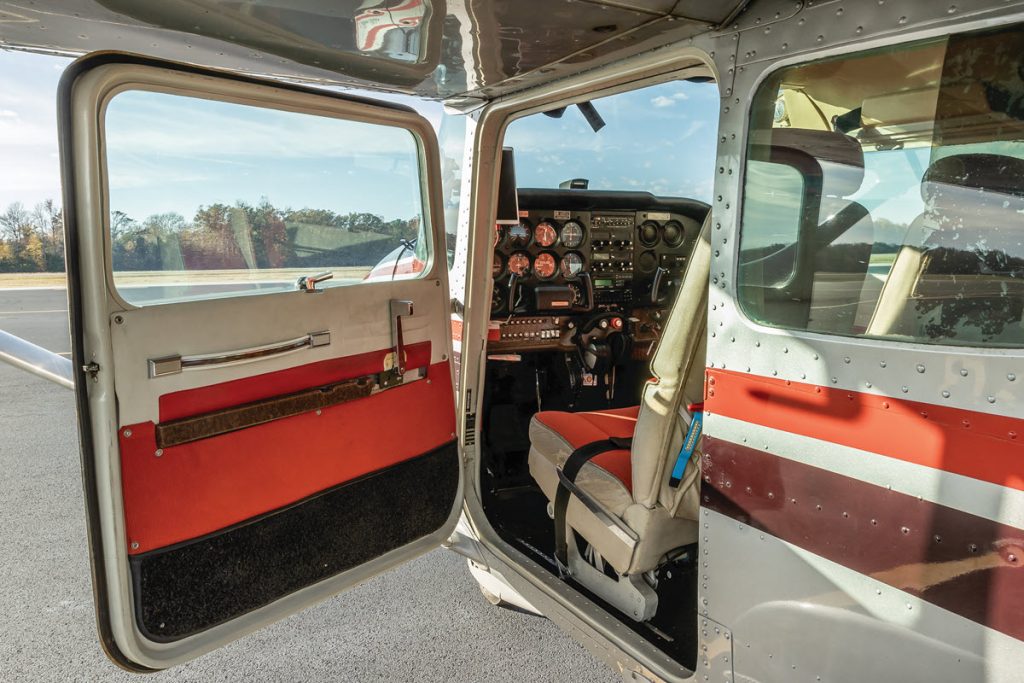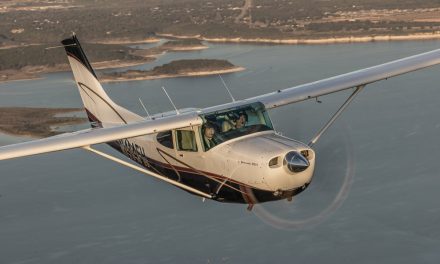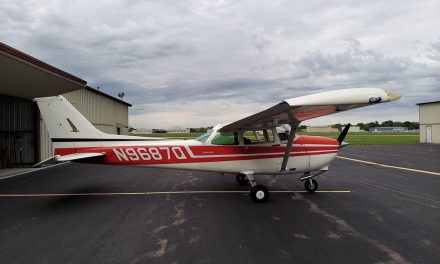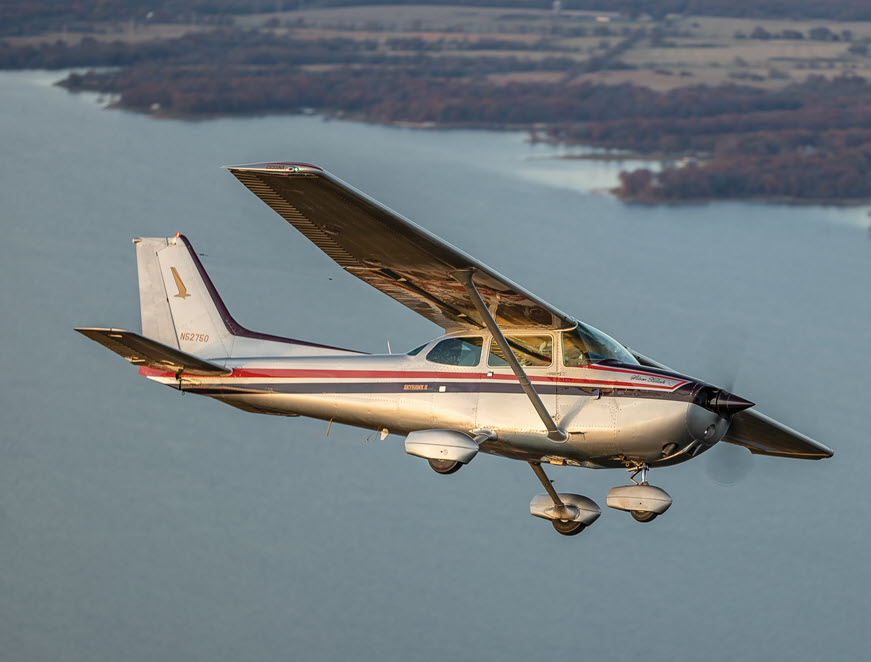
As the story goes, Cessna marked the Skyhawk’s Silver Anniversary (25 years) by painting the first one off the line that year metallic cardinal silver, with a midnight red primary stripe and a flag red accent stripe. The interior was cloud gray, Reevane™ red cloth seats, with black Monaco carpet. The panel contained a state-of-the-art IFR avionics package for its time.
In other folklore, it was suggested that the plane was put up for a lottery, providing Cessna dealers the opportunity to be the reseller of this special aircraft. The lucky winner was Air Center, out of Waterloo, Iowa. See the picture of the plaque attached to the fuselage, naming this individual plane the Silver Hawk.
Although it was difficult after all of these years to find much information on this one plane, the current owner, Bob Wieneke shared, “One easy resource that might be overlooked is right on your doorframe: the metal tags installed by the manufacturer that detail not only model/serial numbers, but paint, trim, and fabric codes. They can tell you what the plane looked like when it rolled out of the factory. In my case, it was a string of “SP” codes, meaning it was a “special order” according to the Cessna Parts Catalog. In the catalog were listings of all the possible factory paint and trim combinations, by year of manufacture, and none matched the metallic silver color of my bird. In fact, Cessna NEVER used silver paint in all those years! But the paint color name and a numeric code were also listed on the original Weight & Balance manifest.” most likely making this a one-off custom paint job for the Silver Anniversary of the Skyhawk.
Pride in Ownership
As the fourth owner of this special 1981 Cessna 172P Skyhawk (a.k.a. Silver Hawk), Bob Wieneke takes a lot of pride in N52750. And he should. This bird’s history now spans the course of four decades, with a handful of owners, each who have exciting stories to share of their upgrades and travels with a plane that has been an integral part of each family.
The first owner, Marvin Holck, purchased this beauty on September 30, 1981, for a sum of $38,000 and logged many a flight, but lost the plane just two years later amid family financial problems.
Eventually the plane was sold to Bob and Susan Hull on March 12, 1983, for only $30,000. They kept N52750 in their family for 14 years. In August 1983, they added a Brackett Air Filter system; in September 1986, they installed Loran-C for better IFR navigation, and added a NARCO AR 850 altitude reporter in 1989. The Hulls and N52750 enjoyed many a trek to AirVenture in Oshkosh (every year for 30 years), as well as trips to $100 hamburger locales. Once they had to land in a field due to impending severe weather and another time they struck a nighthawk at 5,000 feet (an abnormally high altitude for that bird), leaving blood and feathers on the right wing’s leading edge.
The third owners, Jim and Janice Breitenstine, purchased the plane from VanBortel Aircraft in February 1997, with 1086 TT since new. The current owners, Bob and Margot Wieneke, acquired this magnificent bird from them exactly 25 years later to the day in February 2022. The Silver Hawk was the perfect fit for their mission which included $100 hamburger runs and even longer cross-country trips.
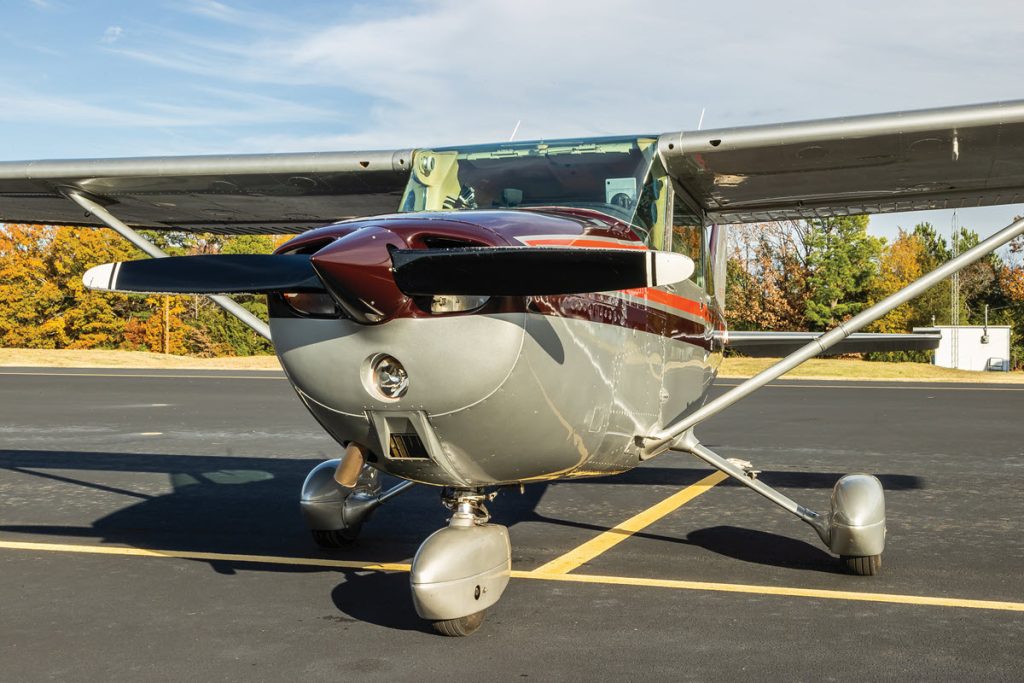
Happily Hangared
Since acquiring N52750 in 2022, Bob and Margot haven’t made any notable upgrades, except the addition of an iFlyEFB tablet for safety, supplementing the Stratus ESG ADS-B unit installed by the Breitenstines. Future plans include working on the interior of the plane. Bob shared, “The vinyl, especially on the seat edges, is in need of serious help and the armrests were broken/missing large pieces. The biggest problem is trying to duplicate the Cessna woodgrain on those armrests, which matches that on the subpanel.”
Bob isn’t feeling any heat to upgrade his plane’s avionics. With only 1700 hours on it since new and with Bob’s over 40 years flying experience with the avionics on board, it’s a perfect fit for the way he wants to fly. As Bob stated, “I just plan to keep taking excellent care of it and enjoying it for what it is – a 40+ year-old-but-almost-new airplane that flies perfectly, with an engine (Lycoming O-320 D2J) that runs perfectly!”
The Wieneke’s love flying wherever they may be – Minnesota in summer (and the beauty of those 11,800 lakes) and Texas in winter, where they don’t have to worry about snow, ice, and stuck hangar doors. And who can forget the trek to Oshkosh every year – they wouldn’t miss that for the world. Future flight plans include visiting the western United States, where Bob commented, “I think seeing the mountains up close (but not too close!), would be awesome.”
TREASURE HUNT
Discover Your Aircraft’s Life Story
by Bob Wieneke
A few years ago, while shopping for a plane, a friend led me to a beautiful Stinson restored to “factory original” condition. The chopped-up panel was discarded, every stitch of fabric came off, the frame was cleaned and then coated with zinc chromate. Afterward, it was put back together – with a barber-stripe polished aluminum subpanel and original “Blind Flying” instrument layout—just like the day it rolled off the assembly line. It was a very impressive restoration by 2011 EAA/Oshkosh Gold Lindy winner Rick Michalek.
But something else also stood out to me – the book its owners, Mark & Vickie Robertson of Keosauqua, Iowa, had put together. There were letters from previous owners, snapshots from ‘back in the day,’ and a complete photo history of the restoration. Other images showed friends & family who enjoyed plane rides during the 30 years the couple owned it.
That process started me thinking: everyone could benefit from knowing their plane’s history. And the more you know, the better!
BEFORE YOU START YOUR QUEST
Before beginning, know that the depth of your efforts is limited by only a few decisions:
- Decide why you want to do the research in the first place. In my case, it satisfied a curiosity; an “itch.” I wanted to create a legacy for future owners with a book that contained not only this unique airplane’s history, but also each owners’ unique histories. In my mind, they are eternally connected.
- Decide how far down the rabbit hole you will go. For me, there is no limit. This will be like a never-ending story, and I’ll continue to look for clues and chase them as long as I can.
- Decide how much time you want to invest, and when. This is a great rainy-day, winter day project, or maybe it’s an evening a week.
The Treasure Hunt Begins
1. Order the complete FAA record of your plane if you didn’t do it during the pre-buy. Visit aircraft.faa.gov/e.gov/ND to request your aircraft records. It details former owners, where the aircraft was based, any damage incidents, liens, etc. You can use that information to begin connecting with former owners, your best resource.
2. Research, research,research. A simple Google search can unearth more information in minutes than one ever imagined. Search for former owners, information on the plane, and more
3. Call the former owners on the phone if you can. Find valid phone numbers using tools like FastPeopleSearch.com and Whitepages.com. Most people, when you tell them why you’re calling, will be gracious. Thankfully it only took a few calls to land a 3-hour brunch with the second owners, the Hulls.
Meeting with the Hulls created a life-long friendship. They had always wondered where the airplane went, if it was still flying, and being treated with the same loving care they’d given it. That encounter, along with our mutual connection to the aircraft, became the foundation of a new friendship. A true ‘bonus’ from what began as a simple information search.
4. Logbooks are a great resource. How was the plane maintained and by whom? How many hours were logged between annual inspections? Was there maintenance done at places far from home base? Did it sit for lengthy periods with no activity? These clues are potentially vital to the health of the engine and airframe, and how any issues were addressed. Weight & Balance records will tell you when & what equipment was added or removed.
To better understand the “big picture” of the logbooks, I built an Excel spreadsheet including the dates, Tach hours, work description, and the A&P/FBO who performed the work. Like pilots or aircraft information, you can find mechanics in the FAA databases, too. In fact, they may be a useful resource for your story. Note: You’ll have more detective work deciphering the handwriting. Going back in time, there were no computer-printed stickers and some mechanic’s scrawls can rival a doctor’s scribble for illegibility!
There may also be 8130s or other forms stapled into the logs or as separate sheets in a maintenance file. This information may lead to subcontractors who did instrument or cylinder work, avionics shops, etc. I combed through every invoice, work order, and paper I could get for more clues and data to add to the plane’s story.
5. Look for metal tags installed by the manufacturer on the doorframe of the plane. These will detail not only model/serial numbers, but also paint, trim, and fabric codes. They can tell you what the plane looked like when it rolled out of the factory.
Just remember, clues are not often obvious, and they won’t all be revealed at once. Collect them one at a time, follow them where they lead, and don’t forget to look sideways. Footprints revealed off the path may lead to other clues, more stories, and maybe even a new friendship in the making!
When Margot and I met with the Hulls two years ago, Susan Hull showed me a sweater she had made for her husband, Bob, with the Silver Hawk embroidered on it. He passed away in October of 2023. Just a week ago, I received a surprise package from Susan; she sent me Bob’s sweater! If I hadn’t gone searching for the story of the Silver Hawk, that connection and friendship would never have occurred.
Your plane’s story is worth every minute of time you invest in it! And, hopefully, as I did, you’ll find the process both interesting and rewarding.
The result of my efforts has become the story of a unique aircraft: “The Legend of the ‘Silver Hawk’.” If you would like to read the story and/or are interested in a copy of the Excel worksheet used to reconstruct the maintenance history, send an email to silverhawk@2ntx.us.
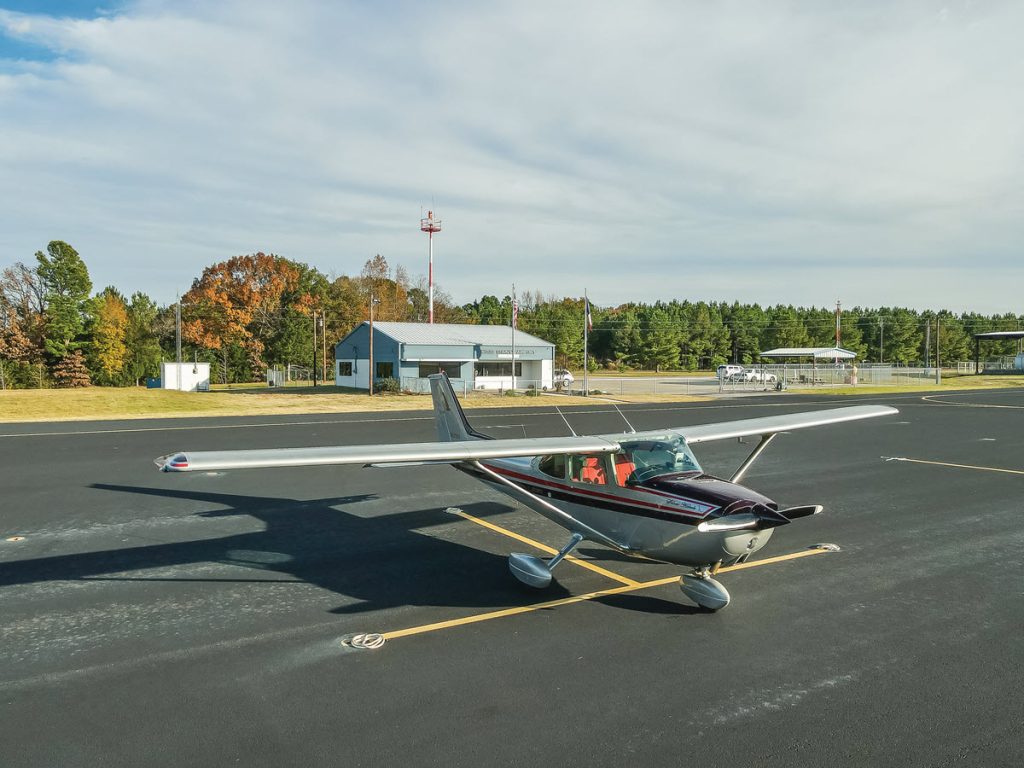

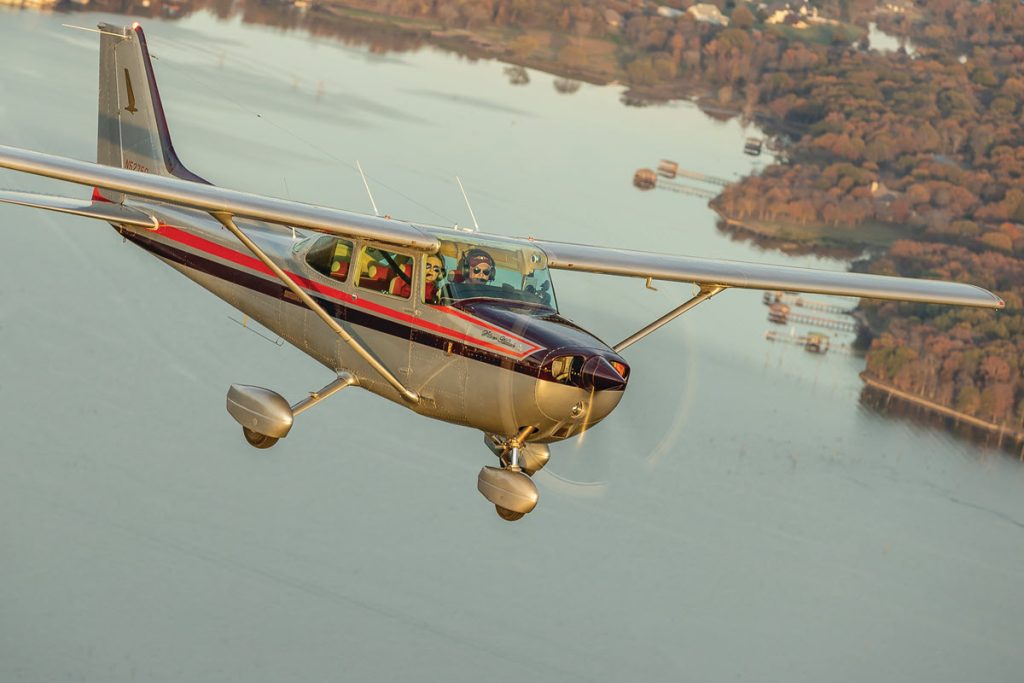


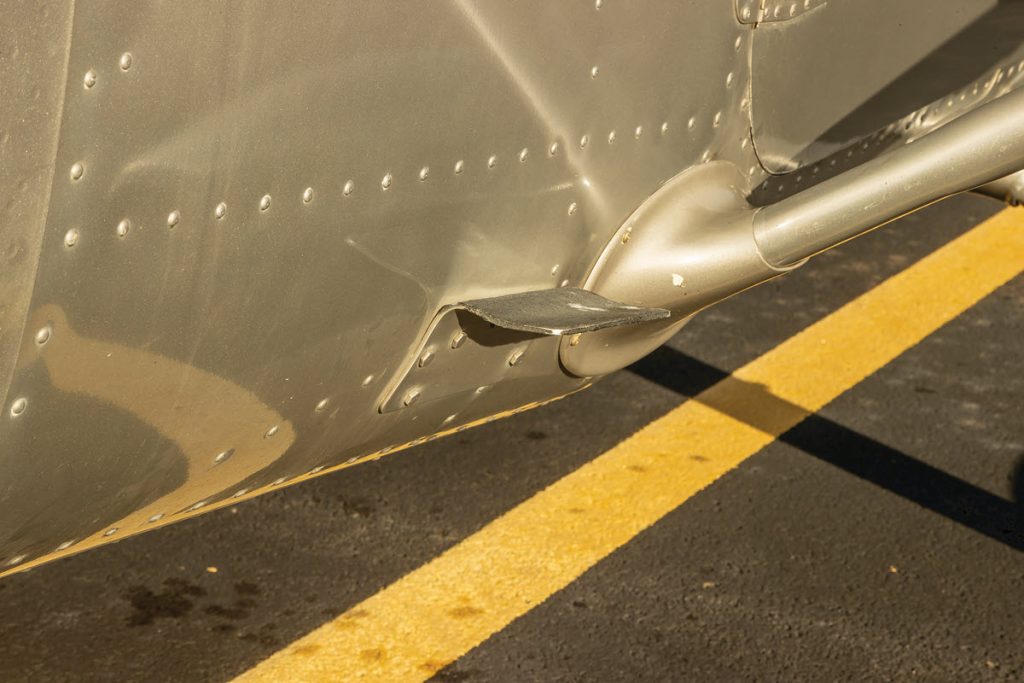
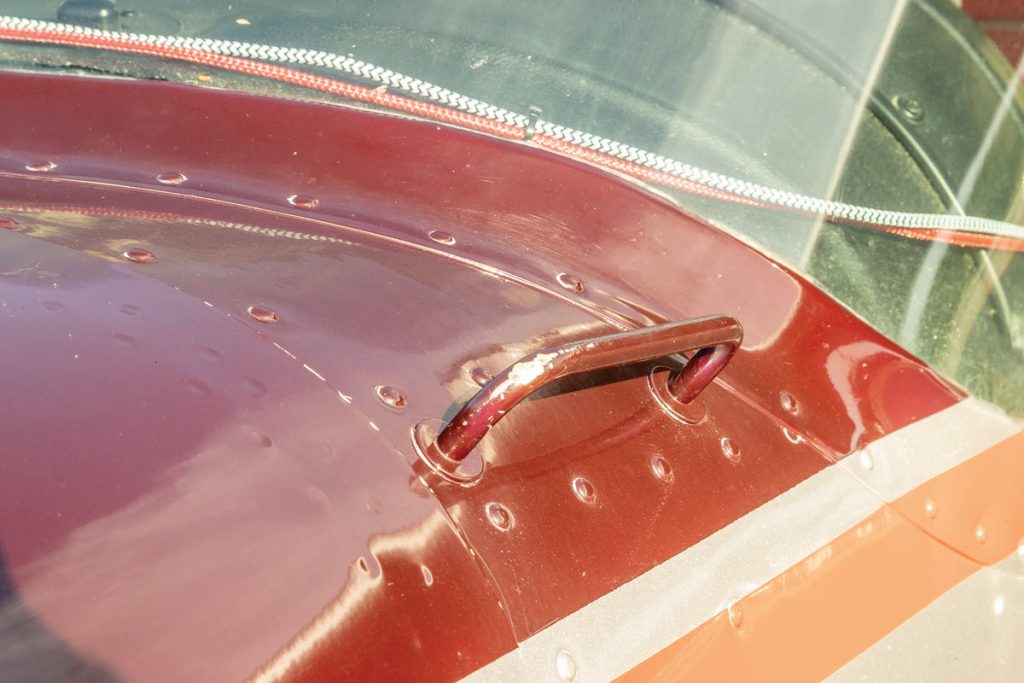

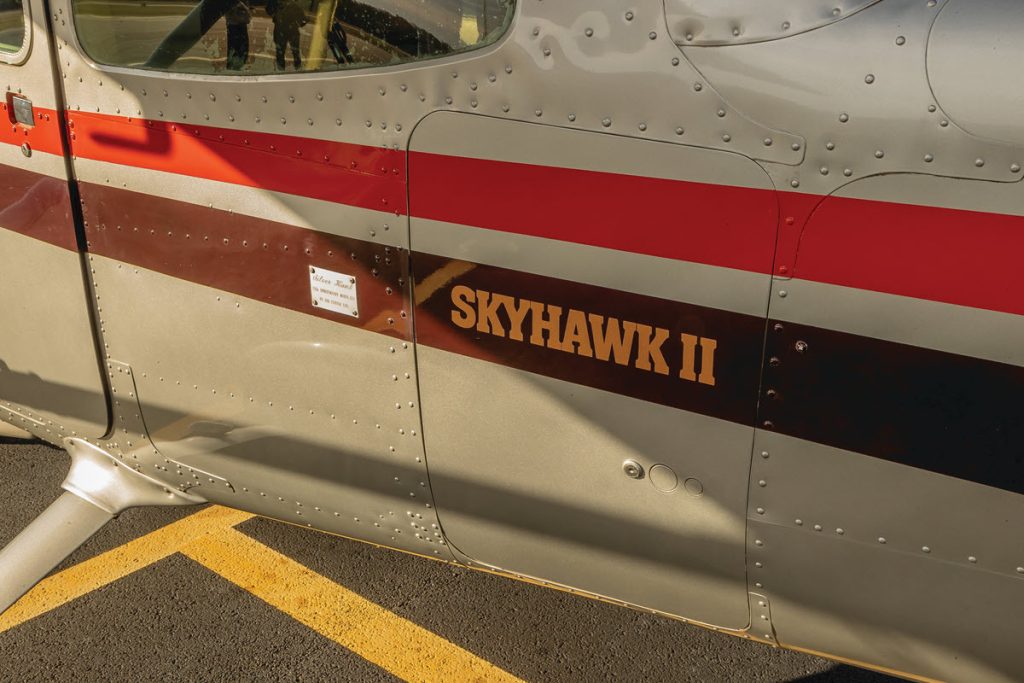
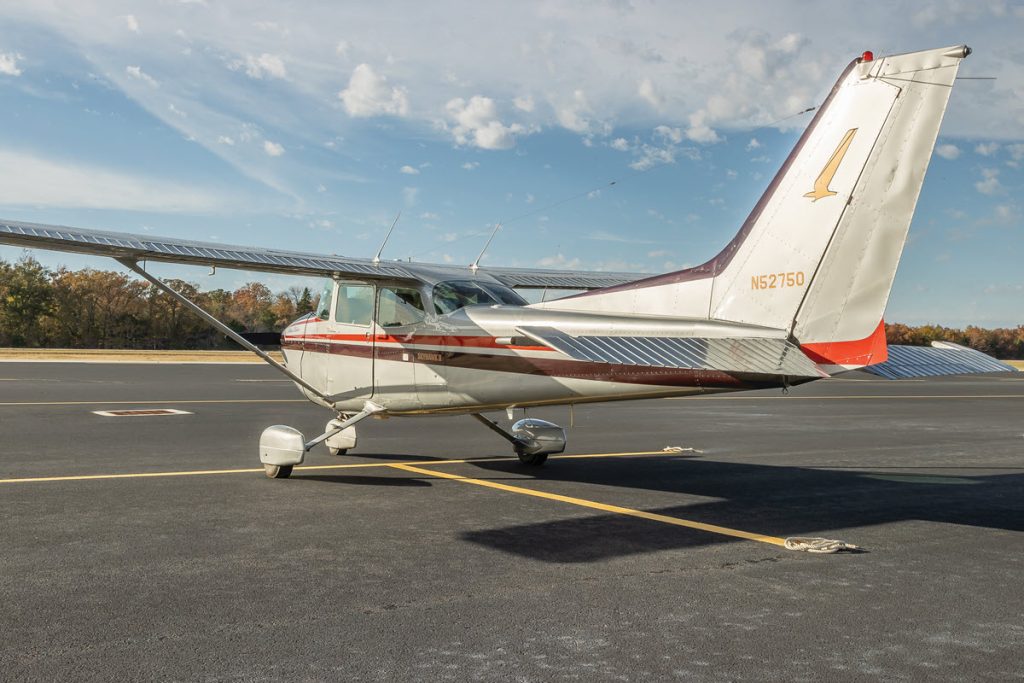
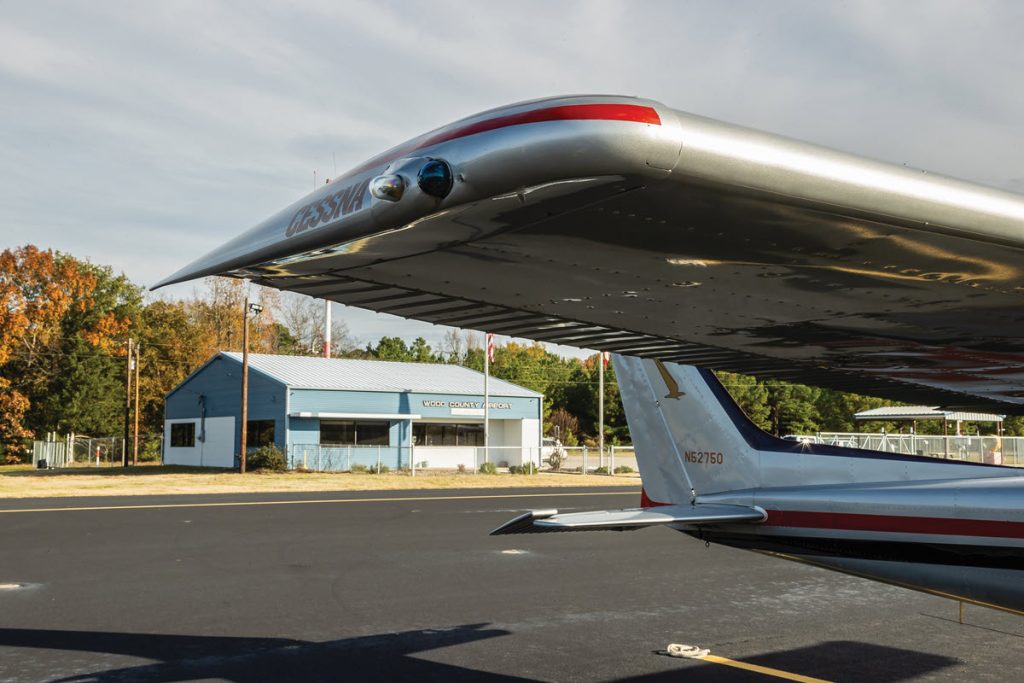
Bob Wieneke and his wife Margot own the “Silver Hawk” (N52750). Introduced to flying by his father, an Army Air Corps CFII, Bob developed an early love for aviation. He worked as a ‘flag boy’ for a crop sprayer in high school and started flying lessons then. At the University of North Dakota in 1967, he briefly joined the flying club and passed ground school; the first aviation course ever taught at what is now the world-renowned John D. Odegard School of Aerospace Sciences at UND. After serving in the U.S. Air Force overseas and many interruptions, Bob finally earned his Private Pilot license in 1980. Bob recently passed the 1,000-hour milestone; over 400 of those while flying missions as a member of the Civil Air Patrol, the official auxiliary of the U.S. Air Force. Lt Col Wieneke was commander of the Lakeshore Squadron of C.A.P. in Rockwall, Texas, and currently serves as the Group 2 Public Affairs Officer in the Texas Wing. Reach out with comments or questions to bobw@2ntx.us

